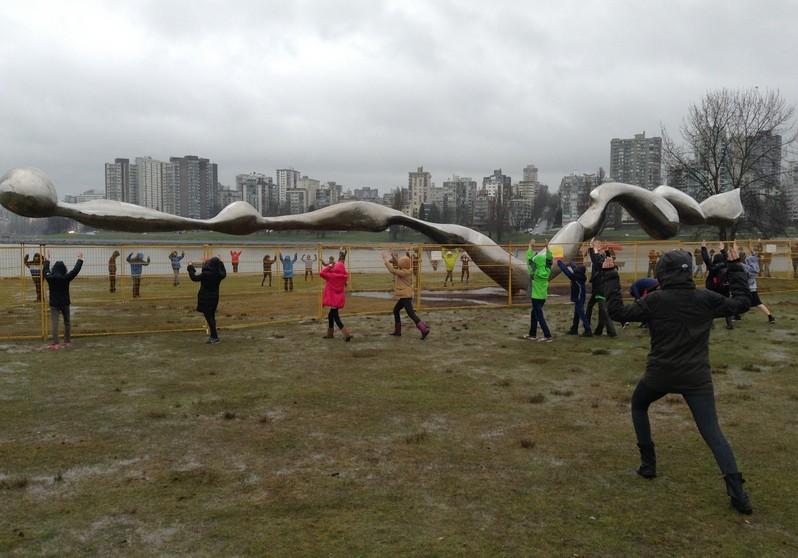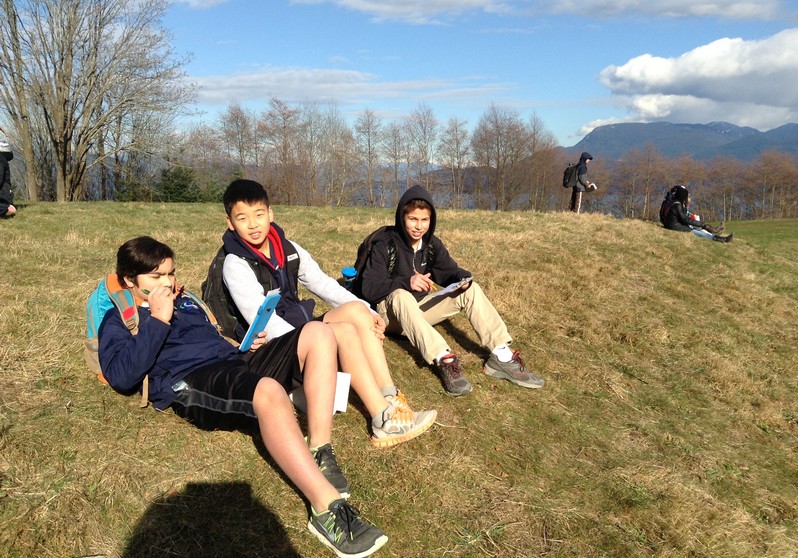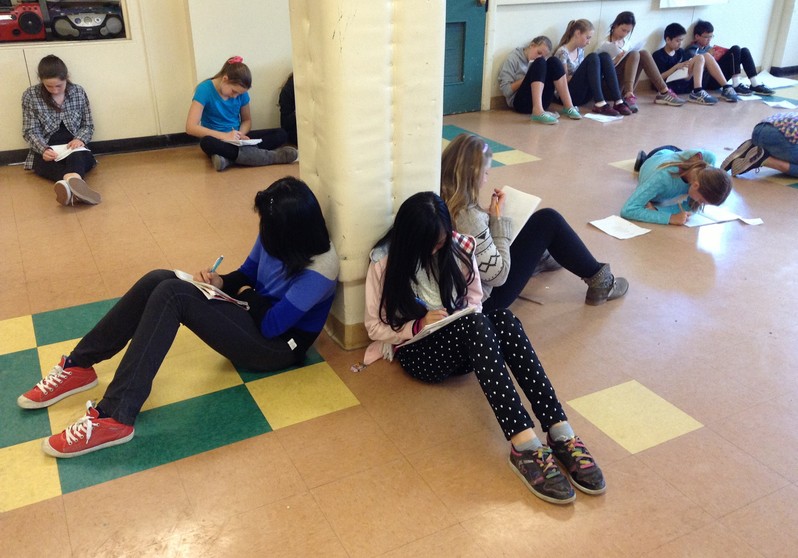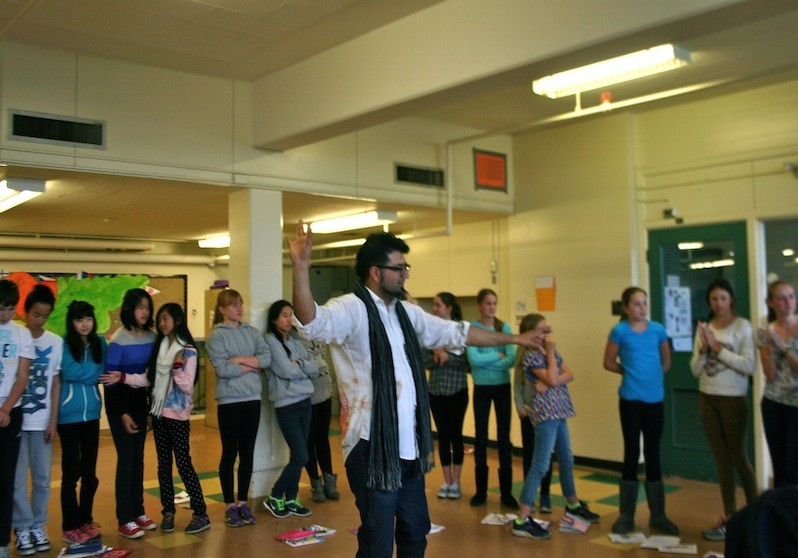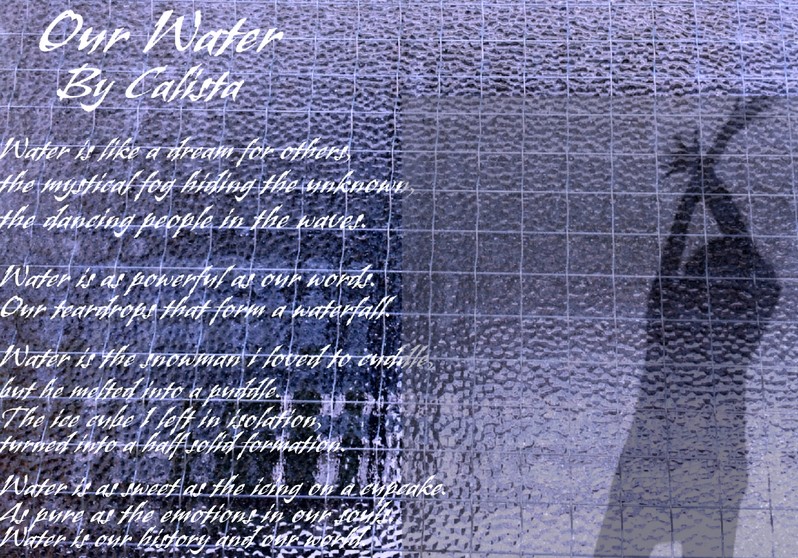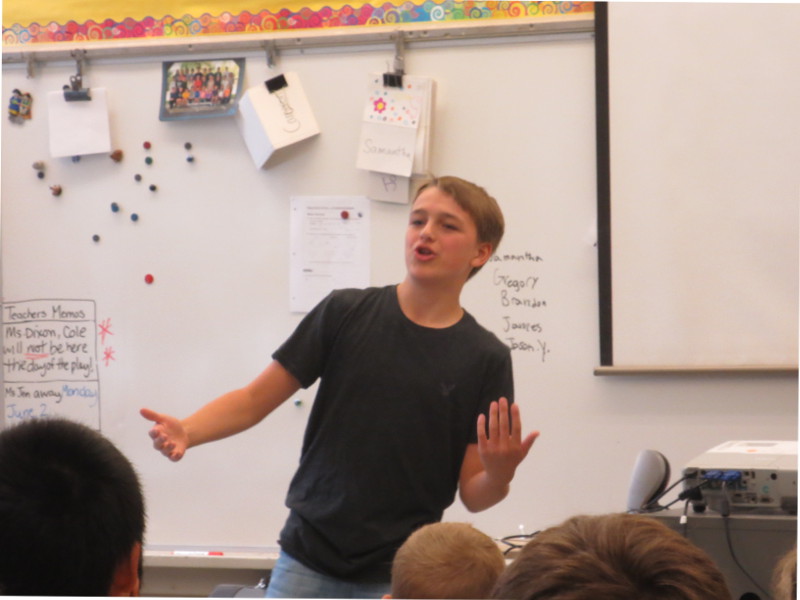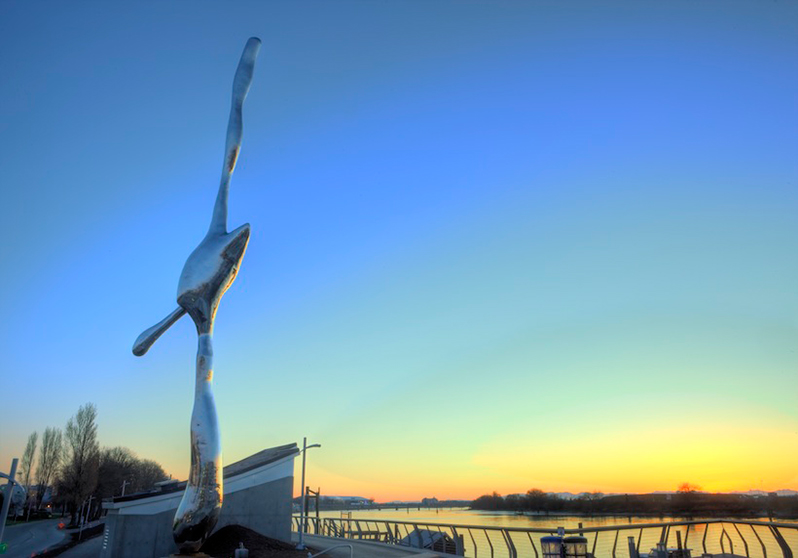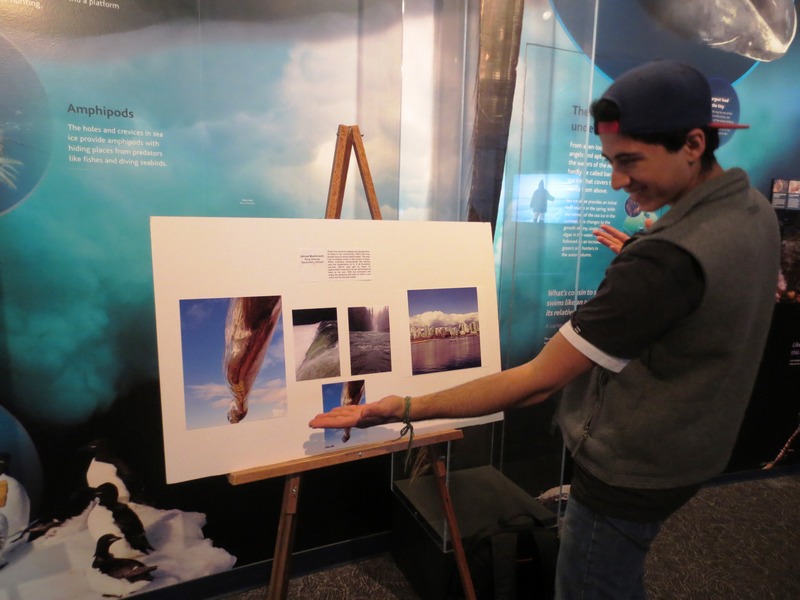Kerrisdale Gr 6/7
Arts Education, Health and Career Education, Language Arts, Science, Social Studies
School
Kerrisdale Elementary School, Vancouver, BC
Teachers
Jane Spencer and Alison Dixon
Artist
Rup Sidhu
Class
Two classes of Grade 6/7
Connection to the Vancouver Biennale Exhibition
Vancouver Biennale 2009 – 2011 Exhibition: Freezing Water #7 (Ren Jun, China) – Students discussed how does the sculpture influences and is influenced by the space it inhabits.
The curatorial theme of the 2014-2016 Exhibition is Open Borders / Crossroads Vancouver. The Exhibition Theme inspires the students to inquire into Vancouver as a city at a crossroad: the intersection of land and culture, where diverse cultures intersect and where the past can inform the present.
Other Sources of Inspiration
- Museum of Anthropology
- Vancouver Art Gallery Exhibition: Edward Burtynsky, A Terrible Beauty
- Endowment Lands
Overview
Students engaged in a cross-curricular project exploring how he environment shapes the lives and culture of people from the perspectives of First Nation peoples, immigrants and modern young people. They looked at Vancouver as both a physical and metaphorical crossroad through the lenses of arts education, social studies, science, and health education. The students were encouraged to take a worldview on this inquiry and reflect on a personal level about lifestyle choices, values and how these impact the world around them. Students specifically investigated how the Biennale art installation, Freezing Water #7 enhances our environment, engages us in a dialogue, and challenges us to give something back.
BIG IDEAS
As individuals, and as a culture, we are shaped by our environment. At crossroads where diverse cultures intersect, the past can inform the present.
Guiding Questions
How has Vancouver’s evolution been shaped by the environment? How do people in Vancouver interact with the natural environment? How were ancient cultures shaped by their environment?
Curriculum Access
Arts Education: Students use photo journals to express their responses on the learning topic.
Health and Career Education: In contemplating natural environments and their relationship to them, students fostered a sense of self-awareness, gaining skills in collaboration and learning how to make healthy choices in regards to their mental and physical health.
Language Arts: Students used storytelling and spoken word poetry to share their project, learning about metaphors, analogies and how to express themselves through a variety of written and spoken mediums.
Science: Through their exploration of water and the effect of natural on our environment, students learnt about interdependent relationships within ecosystems and the importance of sustainability in everyday life.
Social Studies: Students considered the interactions between colonizers, who wanted to dominate nature and aboriginal peoples, who lived in balance with nature. They acted out First Nations stories and discussed the connection between ancient and modern cultures.
Learning Process
Following a field trip to Freezing Water #7 students discussed water issues and the importance of water as a resource in class. Students then created poetry beginning with “Water is…” reflecting on the importance of water in their lives and its impact through metaphor and poetic devices. Working in groups, these poems were made into performances as students learnt about dynamic ways of performing from their artist. Students created more “Water is…” poetry, using metaphor, simile, rhyme and free verse to express their learning and views.
Students participated in the following inquiry challenges:
- Personal reflections of spiritual impact and healthy life choices.
- Exploration of First Nations stories and how stories shape our understanding of the world. Field trips to natural settings to reflect on how these natural settings affect our emotions, thoughts and choices.
- Photo journals and written responses to the Guiding Questions.
- After visit to the Vancouver Art Gallery Edward Burtynsky, A Terrible Beauty exhibition, students created their interpretation of Manufactured Landscapes on school grounds.
- Imagining conversations, show pictures of both First Nation canoes and European sailing vessels. Students were challenged to imagine what people from these two boats might say to one another, the differences between their world views and their different understandings of the intersection of land and culture. They included their ideas in “What if…” poems.
Student Creation
- Photo journals of their responses to the Guiding Question, and their learning about water as a resource
- Spoken word poetry about how water is important to them and affects their lives
Taking Action
Students performed their spoken word poetry for their school, sharing their learning and expressions of how we can take care of our environment and water resources.
Time Line
January to March
Preparatory inquiry into environmental issues, history of First Nation and European Explorers, healthy life choices, language arts specifically poetry writing, public speaking
April
• Introduction to the Vancouver Biennale
• Lessons focusing on water as a valuable and life sustaining resource
• Field trip to Freezing Water #7
• Exploration of First Nation storytelling
• Workshops with artist on spoken word poetry, creating poems starting with “Water is…”
• Practicing of performing techniques and how to express oneself eloquently
May
• Workshops with artist exploring other aspect of spoken word poetry
• Creation of photo journals
• Presentation of work with the school
• Slam Poetry Competition
Reflection
Teacher: Jane Spencer
Having completed the application process for the Biennale in November, Alison and I had a clear idea of where we wanted to go with our project and were able to plan our year accordingly. Many of the pieces such as our mindfulness practice in yoga, environmental awareness, and First Nations storytelling were initiated earlier in the year. We visited the Museum of Anthropology and stood beside the ocean to imagine how First Nations people felt as they saw tall ships coming into the harbour. We watched Burtynski’s Watermark and lead up to the project with a unit on poetry and poetic devices. The whole Biennale experience was really a celebration of a year of learning and new understanding. Students were enormously responsive to the energy and enthusiasm Rup Sidhu brought to the project and the resulting spoken word poetry reflected his influence. He was able to share his expertise in using the ipads to enable students to give a new form of presentation to their poems. We were amazed at how, without any prompting from us, students engaged with their subject matter through a social justice lens. The project seemed to give them a powerful voice to stand up for something that was important to them. As teachers and collaborators, Alison and I both feel that we achieved more together than we ever could have on our own. We learned along with the students, and were delighted to share a great sense of pride in how far they had come as learners, poets and advocates for a better world, over the course of the year.
